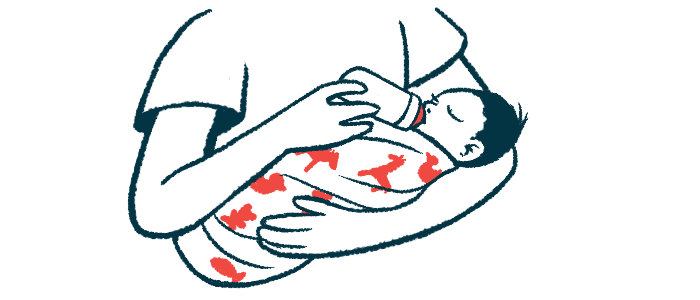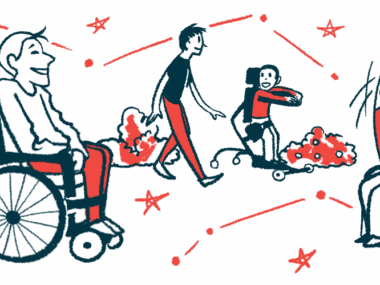Newly identified mutation likely cause of SMARD1 in infant girl
Case supports genetic testing of parents, scientists in China say
Written by |

A baby’s respiratory failure and need for mechanical ventilation were traced to spinal muscular atrophy with respiratory distress type 1 (SMARD1), a very rare disease, with one of her two IGHMBP2 gene mutations never before reported.
“This case expanded knowledge on the genetic profile of SMARD1 and it provides a basis for genetic testing of parents and for genetic counseling to assess the risk of fetal disease,” the researchers wrote in a report from China.
The report, “Novel mutation in the IGHMBP2 gene in spinal muscular atrophy with respiratory distress type 1: A case report,” was published in the journal Heliyon.
Respiratory failure and mechanical ventilation follow infection in infancy
SMARD1 is caused by mutations in the IGHMBP2 gene that result in damage to motor neurons, the nerve cells that control voluntary movement. To develop the disease, a child must inherit two mutated copies of the IGHMBP2 gene, one from each biological parent.
This rare type of spinal muscular atrophy (SMA) is marked by breathing difficulties starting in the first weeks or months after birth, followed by progressive and bodywide muscle weakness while still in infancy. Without mechanical ventilation, babies with SMARD1 usually do not survive past the first year of life.
The girl was born with a low birth weight after a healthy pregnancy. She began breastfeeding normally, with no signs of feeding difficulties. At around age 2 months, however, she developed a respiratory infection followed by difficulty breathing.
The baby’s condition continued to worsen, requiring her to be intubated to keep the airways open and placed on a ventilator to help her breathe. At her current age of 7 months for the report, she continued to need ventilation to breathe despite treating the infection.
Her weight and height remained below the expected range for her age, but “she was alert, active, and able to follow, and fix on, visual and sound stimuli,” the scientists wrote.
They also noted slight tremors in her face and tongue, weak and reduced muscle tone in her limbs, and limited arm and leg movement. Knee and ankle reflexes were absent but the baby could feel sensations, they added, and fatty pads were evident on her second and fifth toes.
Baby inherited an IGHMBP2 mutation in each gene copy from her parents
All these were compatible with symptoms of SMARD1, supporting a diagnosis. Genetic testing revealed that the girl had inherited mutations in both copies of the IGHMBP2 gene; specifically, c.1334A>C (p.His445Pro) was inherited from her father and c.1666C>G (p.His556Asp) from her mother.
Both mutations result in one amino acid, a building block of the protein coded by this gene, being swapped for another. Both her parents were mutation carriers with no disease symptoms.
While c.1334A>C (p.His445Pro) previously has been linked to SMARD1, c.1666C>G (p.His556Asp) has not. Computer simulations predicted that this mutation likely didn’t disrupt the protein’s function, but too little evidence was available to be certain.
“This … mutation has not been reported in patients with SMARD1 previously, and has not been documented in the Human Gene Mutation Database,” a collection of genetic mutations thought to underlie inherited disease, the scientists wrote.
Given the girl’s clinical SMARD1 symptoms, the team suspects the newly reported mutation is likely to be pathogenic [disease causing] or play a role in the disease. “However, [its] pathogenic mechanism needs to be further studied in more patients,” they added.







